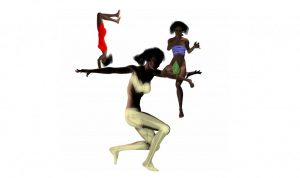Acrobatics
In the late 19th century, tumbling and other acrobatic and gymnastic activities became competitive sport in Europe. The sport is not an Olympic gymnastic discipline although, possibly due to its recent growth in popularity, there are several campaigns to include is some suggesting the removal of Rhythmic Gymnastics to make room for acrobatics
A Table of Difficulty is a matrix from which elements of difficulty can be created and evaluated; while the possibilities are infinite, in order to be credited for difficulty, new elements must be presented to FIG for evaluation:
- All exercises have a maximum duration of 2 minutes 30 seconds
- There is no stipulated minimum
- All exercises must be performed entirely to music
- Words must not be included with the music during an exercise, but voice may be used as an instrument
- Exercises must start from a static position, be choreographed throughout and end in a static position
- All exercises must be choreographed to harmonize logically, aesthetically with the rhythm and mood of the musical accompaniment
Acrobatic traditions are found in many cultures, and there is evidence that the earliest such traditions occurred thousands of years ago. For example, Minoan art from circa 2000 BC contains depictions of acrobatic feats on the backs of bulls. Ancient Greeks and Romans practiced acrobatics, and the noble court displays of the European Middle Ages would often include acrobatic performances that included juggling
The International Gymnastics Federation FIG
acrobatics – project drawings 2015
